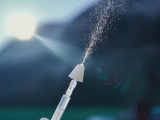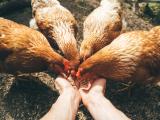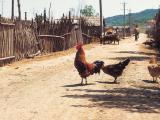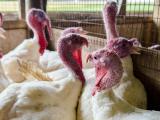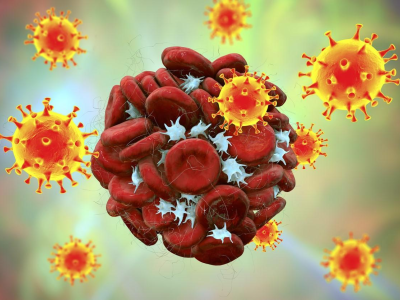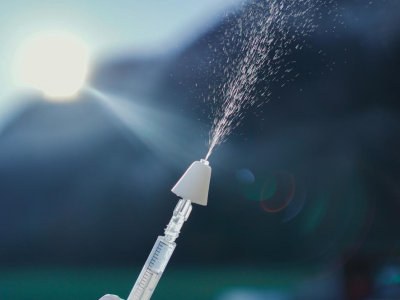Feb 10, 2012
WHO meeting on H5N1 studies to have narrow focus
A meeting planned by the World Health Organization (WHO) next week to discuss two controversial studies on transmissible H5N1 avian influenza viruses will focus narrowly on whether the studies should be published at all and, if so, in full or abridged form, the Canadian Press (CP) reported yesterday. In the studies, Dutch and American teams generated a mutant H5N1 virus and an H5N1-H1N1 reassortant that spread as easily as seasonal flu in ferrets. The US National Science Advisory Board for Biosecurity has recommended that the two journals involved, Science and Nature, withhold the details of the studies out of concern that the data could be exploited by hostile parties. The WHO meeting is unlikely to address the broad question of how to regulate potentially dangerous biological research in the future or—assuming the two studies are not published in full—even how to share the details with those who need to know, WHO officials told the CP. They said they have invited only 22 outside participants to the meeting, scheduled for Feb 16 and 17 in Geneva. The invitees include representatives of the Vietnamese and Indonesian labs that provided the viruses used in the research. The WHO has said it intends to organize a second meeting later with more participants and broader goals.
Meanwhile, the editors of The Lancet Infectious Diseases called for publishing the full details of the two studies and devising a system to screen future "dual-use" studies before they are carried out. "Now so much is already known by so many, surely the best way to limit the potential harm is to make the full details and the full risks known to as many as possible so that work to address threats can begin," the editorial said. "Moving forward, the international research community and funding organisations must consider how to regulate research with potential for dual use so that the ramifications are considered and addressed long before it is begun; and certainly well before, so to speak, the ferret is out of the bag."
Feb 10 Lancet Infect Dis editorial
European study confirms that kids bore brunt of 2009 pandemic
As measured by medical visits for respiratory illness, the 2009 flu pandemic in Europe was no worse than a seasonal flu epidemic overall, but children bore a disproportionate share of the burden, according to a study in BMC Infectious Diseases. Researchers from the Netherlands and the WHO's European regional office compared the fall wave of the pandemic with the six preceding flu seasons, focusing on the timing of peak activity, geographic spread, and community impact. They measured the impact by examining the total and age-specific rates of consultations for influenza-like illness (ILI) and acute respiratory illness (ARI). The total ILI and ARI rates were no higher than historical rates in 19 of the 28 countries included, they found. However, the consultation rates for 0- to 4-year-olds and/or 5- to 14-year-olds were higher during the pandemic in 11 of 20 countries that had data. The researchers also determined that the pandemic peaked 10.5 weeks earlier than the seasonal flu epidemics and that it spread from west to east in Western Europe.
Feb 9 BMC Infect Dis report
WHO advisors reassured by pandemic vaccine safety reports
The WHO's vaccine safety advisors reviewed data on the 2009 H1N1 pandemic vaccine at their meeting in December and found that its overall safety record is reassuring, according to a report today in the WHO Weekly Epidemiological Record. The group noted no new safety signals, other than a previously reported link between the adjuvanted vaccine and narcolepsy in children in Finland and Sweden. They noted that more epidemiologic studies in Europe and Canada are under way to further explore a possible link, and other research groups are searching for a biological mechanism for the link. Preliminary data from the United States has shown a slightly increased risk of Guillain-Barre syndrome in people who received the 2009 H1N1 vaccine, a finding that has not been reported in other countries. The group noted that if confirmed, the link would be at low levels typical for seasonal flu vaccine. The advisors also reviewed reports of possible links between the vaccine and certain autoimmune and clinical syndromes and found no major safety concerns, though they said the sample size or methodology may not have been adequate for identifying a link. US and Canadian studies of the pandemic vaccine in pregnant women are reassuring, and additional studies in more countries are being completed, the report said. The advisors also reviewed the most recent data on rotavirus vaccines and concluded that the two vaccines on the market, Rotarix and RotaTeq, may be associated with a sixfold increased risk of intussusception after the first dose in some populations, which is substantially less than the risk seen with a previous rotavirus vaccine. They concluded that the benefits greatly exceed the risks and that active intussusception surveillance in African and Asian countries that plan to introduce the vaccine would be useful for future risk-benefit analysis.
Feb 10 WHO Wkly Epidemiol Rec report
Norway to compensate children for narcolepsy tied to pandemic flu shots
A government board in Norway has upheld damage claims for three children who have narcolepsy that was probably triggered by the Pandemrix vaccine, used for pandemic 2009 influenza, according to The Foreigner, an English-language service that provides news of Norway. Another 20 claims of narcolepsy in children possibly related to the vaccine are awaiting processing by the government panel, the story said. About 598,000 Norwegian children and youth from 6 months to 19 years old received Pandemrix during the 2009-10 pandemic vaccination campaign, according to the report. Rolf Gunnar, assistant director of the government board, said compensation will depend on the severity and duration of the children's illness and how much it affects their everyday lives. Pandemrix-related narcolepsy cases in children have also been reported in Sweden and Finland, and compensation programs in both countries were announced last fall.
Feb 10 The Foreigner story
Oct 7, 2011, CIDRAP News item on cases in Sweden
Japanese parents worried about oral polio vaccine
Nearly a third of surveyed parents of young children in Japan want inactivated polio vaccine (IPV) for their children, says a letter in tomorrow's The Lancet from five physicians at Seisa University, Yokohama, and the University of Tokyo. The authors surveyed 260 parents of day care and nursery school children in Kanagawa prefecture. Oral polio vaccine (OPV) was considered dangerous by 50 (19%) respondents, and 81 (31%) wanted IPV for their youngsters. A growing fear of OPV because of the potential for vaccine-associated disease is resulting in decreased inoculation rates in children, point out the authors. The country's health ministry reported a 17.5% drop in OPV coverage from April through June 2011 compared with a year earlier, and some pediatricians are importing IPV for children whose parents can pay the price. The Japan Pediatrics Society recommends OPV until domestically produced IPV becomes available, which is expected no sooner than the end of this year, according to the letter. The authors say that although Japan has been actively involved in the Global Polio Eradication Initiative, "The lack of consistency between its domestic and global health policies is harming its own people."
Feb 11 Lancet letter
